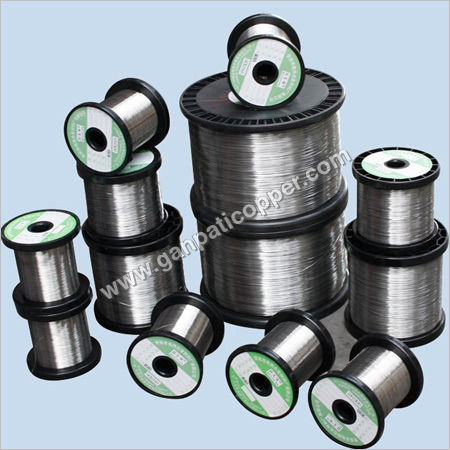Copper Clad Aluminium Wire
850.00 - 900.00 INR
Product Details:
- Strength High Strength
- Alloy Yes
- Click to View more
X
Copper Clad Aluminium Wire Price And Quantity
- 100 Kilograms
- 850.00 - 900.00 INR
Copper Clad Aluminium Wire Product Specifications
- Yes
- High Strength
Copper Clad Aluminium Wire Trade Information
- 1000 Kilograms Per Day
- 2-3 Days
Product Description
Copper clad aluminum wire (CCAW) is a type of electrical wire that consists of an aluminum core with a thin layer of copper cladding around it. The copper cladding is typically between 5% and 15% of the wire's overall diameter.
CCAW is often used as a low-cost alternative to solid copper wire in applications where weight and conductivity are important. The aluminum core provides the wire with a lightweight and low-density structure, while the copper cladding improves the wire's conductivity and corrosion resistance.
One of the advantages of CCAW is its weight savings over solid copper wire. Because aluminum is less dense than copper, a CCAW wire with the same conductivity as a solid copper wire will be lighter and easier to handle. This can be important in applications where weight is a factor, such as in aerospace or automotive applications.
However, CCAW may have lower mechanical strength compared to copper wire, making it more prone to breaking or cracking under certain conditions. Also, CCAW may require special processing and manufacturing techniques, as the different thermal expansion rates of the two metals can cause issues during production.
Overall, CCAW is a cost-effective alternative to solid copper wire in applications where weight and conductivity are important, but care must be taken to ensure that it is used appropriately and in a manner consistent with the intended application.
Tell us about your requirement

Price:
Quantity
Select Unit
- 50
- 100
- 200
- 250
- 500
- 1000+
Additional detail
Mobile number
Email

 English
English Spanish
Spanish French
French German
German Italian
Italian Chinese (Simplified)
Chinese (Simplified) Japanese
Japanese Korean
Korean Arabic
Arabic Portuguese
Portuguese






